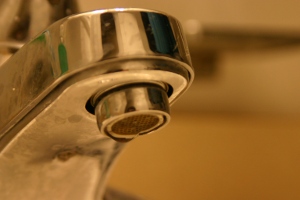A report recently released by the city’s Water Utility Transition Advisory Task Force, or WUTAT (pronounced WOO-tat) for short, states that even though water rates have increased, the income generated by water bills doesn’t cover the system maintenance costs.
Read the report below.
Raleigh’s underground water infrastructure, mainly pipes in the ground, needs more than $7 billion in repairs, according to City Public Utilities Director John Carman. These are not immediate costs, he said, but now is when Raleigh should be planning to replace pipes that will age out during the coming decades.
Carman told the Record the current financial model for the system does not put away any money to pay for replacing pipes that have a lifespan of anywhere from 60 to 100 years.
“We have $500 million worth of pipe that was installed before World War II,” Carman said.
He said that bonds and similar big loans are a good way to pay for large projects such as a new water treatment plant. But, Carman said, pipe replacement should be paid along the way directly from water bills.

The Dempsey E. Benton Water Treatment Plant. Although water rates cover operating costs, they do not cover maintenance costs for new underground pipes.
Raleigh’s water system is what’s called an enterprise system, meaning it pays for itself. The catch is that most of the system’s costs—running treatment plans, fixing old pipes, making sure water always comes out of the tap—are fixed. And most of the system’s income goes up and down with water use.
Peter Scott, co-chair of the WUTAT and a former Progress Energy executive, told city councilors last month that residents have done well with water conservation, with per capital consumption down 40 percent since 1987. But, Scott said, revenue “must increase significantly” to cover the cost of the system.
City Councilors created the WUTAT two years ago to study the city’s water system and make recommendations on how to best manage the financial model of the utility.
The tiered rate structure the city implemented last year, which charges more per gallon the more residential customers use, has been lowering water usage across the city, and that means less income for the utility.
After questioning from councilors about how to best address the long-term revenue shortfalls, Scott said that when it comes to how much to charge water customers, “the more fixed, the better.”
That means more of the water bill should be made up with fees, not based on how many gallons a home or business uses.
Carman said after the meeting that the “current financial model does a good job of fixing infrastructure above ground,” such as pump stations, water treatment plants and the like.
“The piece that’s missing is the part fixing the below-ground infrastructure,” he said.
Councilor Thomas Crowder expressed frustration at the meeting last month with the water rates loop they find themselves in: “Raise rates, lower consumption, raise rates again, lower consumption.”
Ninety percent of Raleigh’s water costs are fixed, and about three quarters go up and down with usage, according to the WUTAT report.
Scott told councilors that the main issue with the water system’s financial model is that there are no reserves for droughts, repairs or other contingencies.
City councilors already raised sewer rates last year and Scott said that action was “moving in the right direction, where we reflect the actual costs.”
